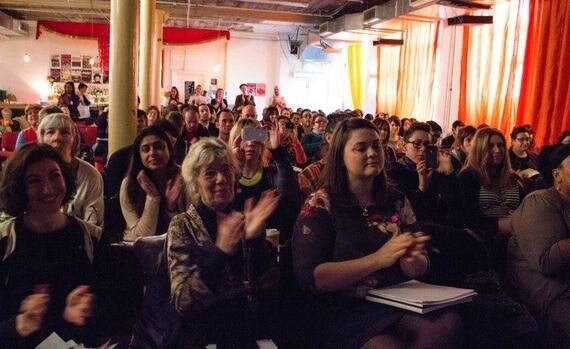Money is the dirty word in the Art World. Damien Hirst is constantly being criticised for making too much money. He has sold out as many people would say. However, no artist is being criticised for making too little or virtually zero. A lawyer is expected to get paid a fat fee. Plumbers are one of the best financially rewarded jobs in the country. And let's not mention the bankers. But the artist and many art professionals are expected to do it for free. It is a mindset that needs to be addressed, because believe it or not, the artists also need to eat and have to pay rent like everybody else.
Southwark Arts Forum, based in London, has been at the forefront in tackling such unfair issue. The Art of Making Money in which a mix of creative professionals shared their experiences on how to live and work establishing a career in the creative industries proved to be a successful way on how other professionals cope and thrive in such a money-shy industry.

Photograph courtesy SAF and VANEK, the photographer.
Bridget Edwards, SAF Director, has kindly agreed to respond to the following questions:
1. Can you tell us what Southwark Arts Forum is for?
SAF is a cultural agency originally set up by a group of local artists in Southwark in 1987. Today SAF counts over 3,000 members, and our creative network grows from strength to strength. We connect, support, and showcase the work of emerging and established professionals, through a wide-ranging programme.
2. Can you tell us a bit about your background?
It's been varied! I have over 25 years experience working in the creative industries. My first job was with John Lewis in their buying department of ladies underwear, back in the 80s and moved on to spend many a hectic year in their young fashions dept. I freelanced for several years as a Fashion Stylist, whilst my children were small and later moved to working with community artists, running workshops for people wanting to learn to draw, dance, write, and sing. I also spent some time working in the arts & criminal justice sector, supporting arts professionals working there and advocating for the use of arts based interventions as part of a prisoner's rehabilitation. I've been with SAF now, for over three years and was brought in to manage change and to develop a more sustained approach to funding its work.
3. What makes SAF special if you compare it with other organisations?
All I can say is that at SAF we work with 'people'. And when I say that, I mean whilst SAF is a cultural agency with a professional, competitive approach, we do have a big heart for the artist. As well as making, showing and selling work, the life of a jobbing artist will see many of our members working in variety of community settings. Another aspect that enriches us as an organisation, and differentiates us from others, is the mix of members that we have: visual artists, musicians, filmmakers, dancers, photographers, poets, film producers, graphic designers, theatres, galleries, studios, arts organisations, community groups, education institutions, council staff, and local businesses. And we are proud to offer them channels to network and effective tools to engage with each other.
4. How has been the reaction to "The Art of Making Money" day conference?
The Art of Making Money is one of our most successful conferences. The feedback from it couldn't have been better. We sold out and had almost everyone show up, even though there was a tube strike that day. SAF members and guests got together, not only to get essential tips from established professionals; but also to meet and learn from each other and exchange experiences, initiate collaborations and start new conversations on how do we make money in this profession. As well as learning about ways to get work produced, we added sessions on confidence building and financial management.
5. How does SAF survive in such a difficult financial climate?
It's tough! We're a lean outfit, with tight margins. We have outsourced work where we can, keeping our overheads as low as possible. Our funding mix is that of local council commissioned work, ticket sales, membership fees, and project grants. This, together with generous donations of people's time, talents, and resources has kept us moving forward and able to do what we do.
6. Can you tell us the benefits of becoming a member?
We say that Southwark is a state of mind, so you simply have to be interested in what SAF's doing to join us. The benefits of membership are that:
You get to exhibit your work at SAF exhibitions, arts markets, and events.
You get 15 minutes free specialist advice.
You get to promote your work & events to the network of over 3,ooo members via our ebulletin.
Improve your online presence by creating SAF Arts Directory, Arts Map profiles.
Participate in professional development learning.
Access to exclusive online resources and downloads.
Instant discounts to SAF advice sessions, workshops and market stall hire a - all this for less then £2.50 a month!